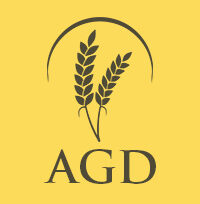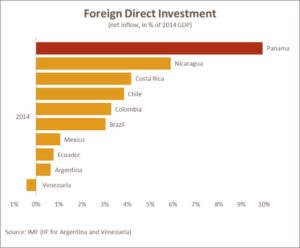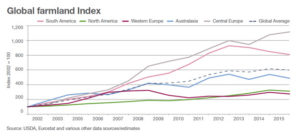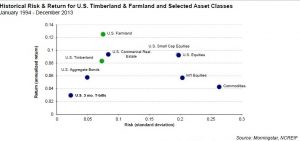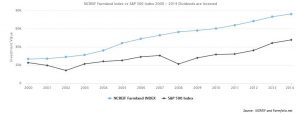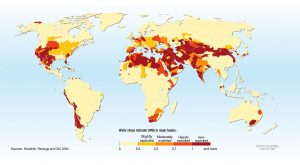Our most recent article for Global AgInvesting. Enjoy an abbreviated version of the article below. You can find the full article here
As always, don’t hesitate to contact us if you can help.
Best Wishes,
Michael
————————-
Potash — it’s a key component to feeding the world’s growing population, yet many don’t even understand what it is or why it is important. In the broadest sense, potash refers to a variety of mined and manufactured salts that contain potassium in water-soluble form. Before the industrial era, ash burners (workers who collected or produced wood ash) would soak wood ash in water, then evaporate the water from the mixture in large iron pots leaving behind a concentrated, white residue called pot ash. The name pot ash literally means plant ashes soaked in water in a pot.
Today, potash is more widely associated with naturally occurring potassium salts. Coincidentally, the name potassium comes from the word potash. Global potash production capacity was approximately 51 million metric tons in 2016, with the majority of it used in fertilizers. These fertilizer applications constitute the single largest industrial use of the potassium element in the world, making it an invaluable and irreplaceable part of feeding the world’s growing population, which grows by 80 million people every year – a number equal to the population of Turkey, according to the UN.
The potassium in potash fertilizer is used to encourage water retention in plants, increase yields, improve taste, and even help plants fight disease. Potassium is also an important mineral for keeping humans healthy and must be regularly replaced in our bodies by consuming potassium-rich foods. Since potassium doesn’t exist in elemental form in nature (it reacts violently with water), it has to be combined with other elements, either naturally or mechanically, before it can be used by plants. The naturally occurring union happens as a result of a very long geological process, so, in order to be applied as a fertilizer on our rapidly expanding fields, it has to be mined and processed.
Economic and middle class growth in places like Asia and Latin America have contributed greatly to the increased use of potash-based fertilizer. With increased cash in the pockets of middle class families, the more they’re willing to spend on more and higher quality meat and dairy products. This new and more expensive diet will require more acres to be planted, more fertilizer to be applied, and more animals to be fed – all good news for potash.
The industrial applications for potassium span a variety of necessary human functions. Potassium chloride is used in aluminum recycling, oil-well drilling fluids, snow and ice melting applications, and even in water softening. Potassium carbonate is used to produce animal feed supplements, cement, fire extinguishers, and is an integral component in beer brewing. These non-fertilizer uses historically account for about 15 percent of the annual potash consumption in the United States.
They Don’t Always See Eye to Eye
Most of the world’s potassium reserves were deposited as sea water in ancient inland oceans. After the water evaporated, the potassium salts crystallized into beds of potash ore. These crystallized beds formed thousands of feet below the surface area where most of the world’s potash is being mined today.
Canada possesses the world’s largest potash reserve and is also its largest producer, mining nearly 11.2 million metric tons in 2015. Following closely behind are Russia, Belarus, and Germany to round out the top four.
It should come as no surprise that these countries don’t always see eye to eye when it comes to potash production. In 2013, a trade pact between Russian and Belarusian producers collapsed when Russia pulled out of the agreement, claiming Belarus had been selling potash outside of their pact. Russian producers then quickly announced a policy of heavier production, sending the potash market into a slump from which it has yet to fully recover.
Recent talks between the two governments could signal that the cartel is ready to rise from the ashes once again. Belarusian president Alexander Lukashenko has been suggesting that an agreement between Belaruskali (Belarus’s main producer) and Russia-based Uralkali could allow them to divide up the markets again and agree on production limits. While this could be positive for the overall potash price and the market’s largest producers, the competition is not very happy.
With the state of the former cartel uncertain, competition was allowed to soar along with unregulated production. Many new producers from around the world began to build new mines and ramp up production. The German company, K+S AG, officially opened a new mine in May 2017 while Sirius Minerals is nearing a final plan to begin building the second deepest mine in Europe beneath a national park in Britain.
If cooperation is ultimately restored between Russia and Belarus, it could spell trouble for smaller potash producers. This could, however, be good news for the potash price, which is already up over 20 percent since last July, mostly on the rumor.
Meanwhile, Canada’s potash producers were off to an uncertain start to 2016 as well, with negotiations between key Chinese buyers and Canadian producers dragging on well past their usual wrap-up window of January-March. With market prices sitting around US$230/metric ton in July 2016, the Chinese continued to play hardball, asking for prices below US$200/metric ton. Low potash prices have instead placed the bargaining chips squarely in the hands of the world’s largest potash buyers (China and India included), forcing negotiation at every turn.
Are Low Prices a Cure of Low Potash Prices?
The potash market has had a strong dose of low prices over the last several years, but has this forced the supply and demand equation back into alignment? Is the market poised for a bull run or will the recent price uptick be just another dead cat bounce?
From the supply side, sustained low potash prices have forced many companies to trim excess fat, closing high cost operations and delaying new ones. Shutting down or delaying these operations has had a slight impact on the overall supply, but these production cuts are unlikely to result in a net shortage. Global potash production capacity is forecasted to reach 64.5 million metric tons by 2020, a 22 percent increase compared to 2016’s production capacity of 50.8 million metric tons. How does this stack up against global demand and consumption?
World potash consumption was approximately 35.4 million metric tons in 2016. A comparison with 2016’s production capacity highlights a 15.4 million metric ton supply surplus that isn’t likely to shrink significantly in the next five years. Global consumption is expected to rise (39.0 million metric tons by 2020), but if production capacity hits expectations, the supply surplus will nearly double during that time period.
Between 2015 and 2020, global potash supply is expected to grow by 17 percent with demand increasing by only 11 percent. Barring some major black swan event that could drastically affect global potash supply, this will be a hard gap to close. As the world’s largest potash producer, a look at Canada’s supply/demand forecasts says it all.
Foreign currency exchange rates also will play a role in the potash price of the future. The U.S. imports the majority of its potash from Canada and Russia in U.S. dollars, so a strong Canadian dollar and Russian ruble could support higher potash prices as outside producers attempt to maintain their margins. The Canadian dollar is up more than 10 percent since the start of the year while the Russian ruble has held steady.
However, the U.S. is not the only consumer of potash, and being forced to purchase this necessary component in U.S. dollars is severely affecting some agricultural powerhouses. Brazilian farmers, for example, have been the recipients of the wrong end of the currency exchange stick for years, being forced to convert their reals into dollars to purchase potash at nearly a three to one premium.
The combined effect of long-term low prices and strong demand may not be enough to overcome an increasing supply surplus and mixed buyer currency exchange rates. If the Russians and Belarusians never work collaboratively with potash production again – bringing production back under control – smaller producers will continue to drive new growth, only widening the gap between supply and demand. Meanwhile, China, India, and other major buyers will continue to play coy with their bottom line price, making is easier to negotiate a lower price and harder for markets to predict annual prices. While this is certainly an area to watch going forward, I wouldn’t bet the farm on it.
SOURCES:
- Heffer, Patrick and Prud’Homme, Michael. “Fertilizer Outlook 2016 – 2020.” International Fertilizer Industry Association. 84th Annual IFA Annual Conference. 30 May 2016. Web. 20 August 2017. http://www.fertilizer.org/imis20/images/Library_Downloads/2016_IFa_Moscow_Summary.pdf?WebsiteKey=411e9724-4bda-422f-abfc-8152ed74f306&=404%3bhttp%3a%2f%2fwww.fertilizer.org%3a80%2fen%2fimages%2fLibrary_Downloads%2f2016_IFa_Moscow_Summary.pdf
- Ibid.
